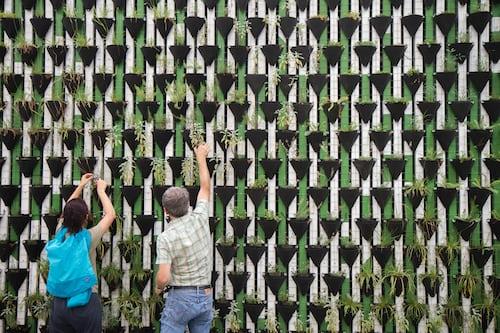- August 27, 2022
HOW DOES AUTOMATION IMPROVE PLANT MANAGEMENT?

Automated plant-tending systems are becoming more common, and indoor grow facilities should be outfitted with these systems in order to maximize efficiency and adapt quickly to changes. Proactive indoor growing is not enough anymore, and the future may be found in hydroponics and aeroponics using an AC infinity fan. But how will we get there? Read on to discover what automation systems can do for the industry, and how you can incorporate them into your indoor growing.
Automated harvesting machines
Automatically harvested goods have numerous advantages. Large growers can save on labor costs by automating the harvesting process. Automatically harvested will decrease the risk of dry buds and will ensure the harvesting process moves as quickly as possible. Furthermore, automated harvesting machines can help growers increase their production capacity in the future. This article will examine the pros and cons of automated harvesting machines for the industry.
The first and most obvious benefit of automation is labor savings. Using automated harvesting systems will allow operators to use their valuable time more effectively. After all, time is money. With less time spent on harvesting and processing, operators can focus on other aspects of the business. Increasing market share and profit margins are other advantages of automated harvesting systems. Additionally, automated harvesting and processing is compliant with regulatory guidelines.
Cost of automation systems
As the market continues to grow and prices become more competitive, the need for better automation is evident. Automation systems can lower production costs and boost efficiency. Small growers who cannot afford expensive equipment will have an opportunity to compete in the market by investing in automation systems. Additionally, automation can help them reduce labor costs. As such, it’s important to understand the ROI of automation systems in production. To get started, growers need to know their own production costs. They should ask themselves the costs of fertilizer, air conditioning BTUs, and labor. Engineers might recommend equipment that makes them the most money, but knowing your own numbers is important to making the right choice.
Automation systems can automate many mundane tasks, including watering and nutrient feeding. By eliminating labor in these processes, growers can achieve massive economies of scale and maintain the high quality of their product. Some automated systems can even send text alerts when a system fails, which can save thousands of dollars in scorched plants. Automation systems are not without risk, however. In the industry, cost-cutting and quality-improving practices are often the most important factors in success.
Remote monitoring
With remote monitoring, a grower can gain a 365-day, 24 hour view of each site. Remote surveillance allows growers to reduce the need for on-site security guards. Remote monitoring can also save money by providing accurate, real-time data and identification of employees. These advantages are just a few of the benefits of automation. Read on to learn more about how remote monitoring can benefit your business.
Aside from automation, remote monitoring can help growers reduce their labor costs and water usage. With proper monitoring, a grower can control lighting and irrigation, as well as reduce energy use. A smart watering system can also monitor carbon dioxide levels. The use of sensors can help growers control pests without using chemical pesticides. And with the use of smartphones, growers can monitor environmental conditions without having to be present.
Efficiency
As the industry expands over the next decade, automation will become an increasingly important part of the cultivation process. The efficiency of automated systems can drastically reduce labor costs and operational hours, and even cut inputs and water usage. Although automation will ultimately displace some jobs, it will also help cultivators reduce their operational costs by up to 20%. Automated systems are not suitable for all growers, however, and require a significant up-front investment.
In addition to focusing on workplace safety, the benefits of automation for the industry extend beyond labor savings. Most new facilities will incorporate automated systems and standard operating procedures to protect employees from exposure to harmful bacteria and pathogens. But older markets may not be ready for such advanced automation systems. Some small operations, like those that focus on maximizing production efficiency, still rely on manual labor for finishing tasks. Despite this, large operations are beginning to adopt automation to keep costs down while maximizing profits.
